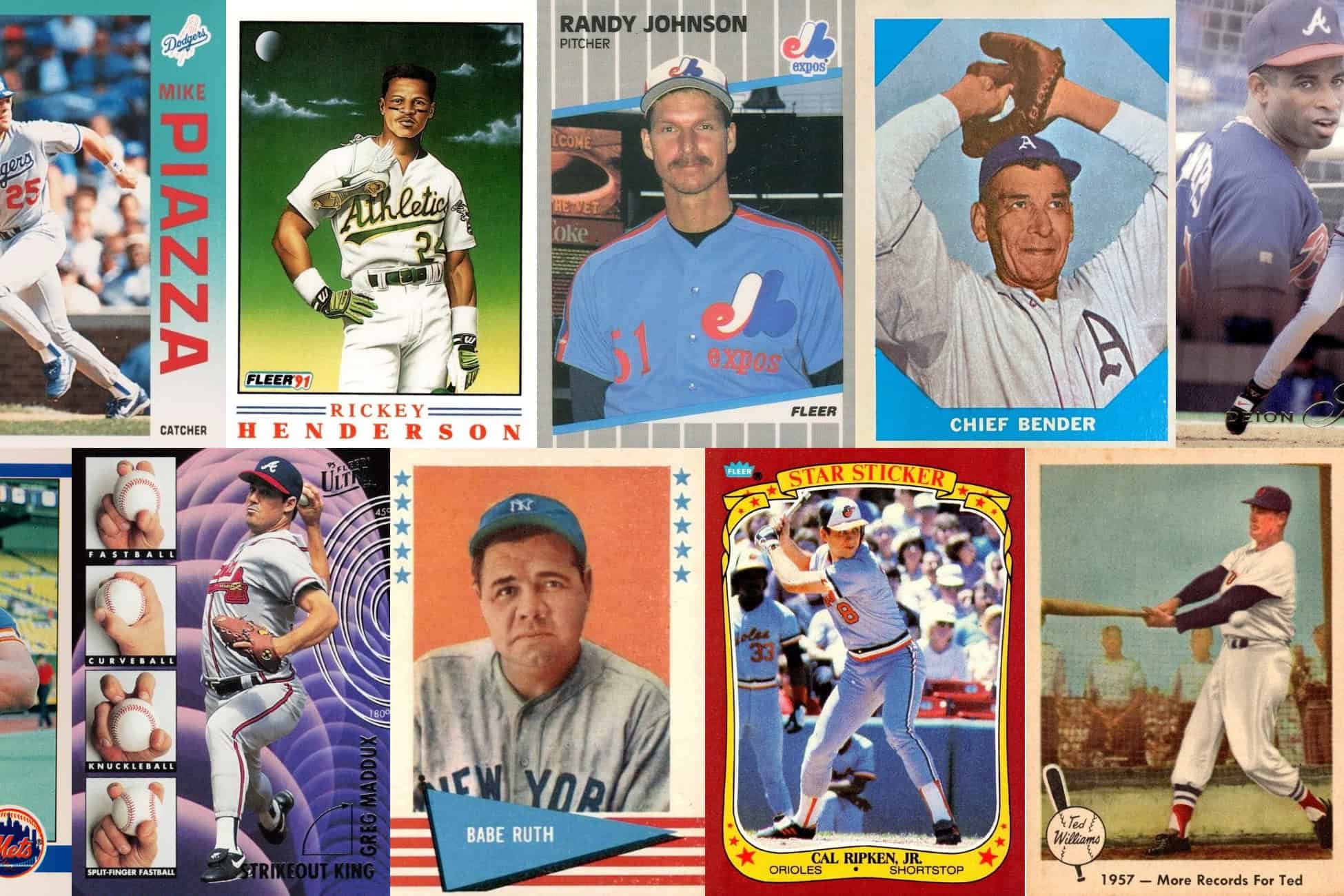Fleer baseball cards hold a unique place in the landscape of sports collectibles. From their early experiments with bubble gum to their role in breaking Topps’ monopoly, Fleer pushed the hobby in new directions. Whether it’s through vibrant card designs, groundbreaking legal battles, or controversial error cards, Fleer’s story is one of risk, creativity, and occasional chaos.
This article explores the origins of Fleer, its visual identity, landmark releases, controversies, commercial trajectory, and where the brand stands today. We also consider how Fleer fit among competitors like Topps, Donruss, and Score, while highlighting insights that hobbyists and collectors will appreciate.
The Founding of Fleer
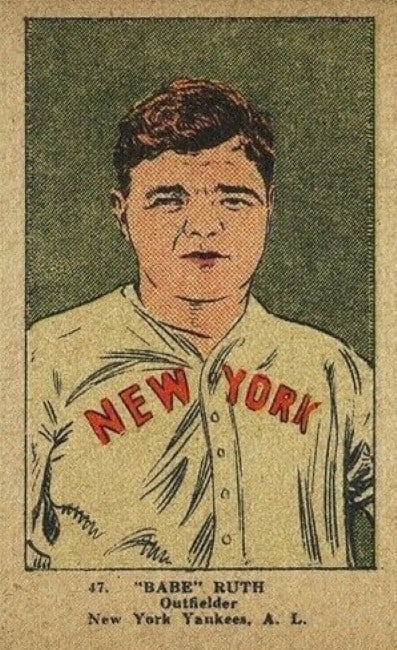
The Fleer company traces its origins to 1885, when Frank H. Fleer founded the Frank H. Fleer Corporation in Philadelphia. Originally a confectionery company, Fleer focused on gum and candy innovations. In 1906, they made headlines by creating the first bubble gum formula, though it wasn’t stable enough to reach the mass market.
Fleer’s connection to baseball cards began in earnest during the 1920s. The first set, catalogued as W515, is part of a larger set featuring historical figures, politicians and contemporary stars, including baseball players. These cards were included as inserts with Fleer’s gum products. Instead of being a traditional baseball card set, E241 was more of a multi-topic promotional series, with artwork on the front and ads for Fleer gum on the back. While the checklist lists 120 different cards, fewer were likely printed or distributed, making the set especially hard to complete today.
It wasn’t until decades later that Fleer entered the modern baseball card industry as a true competitor.
A Brief History of Fleer
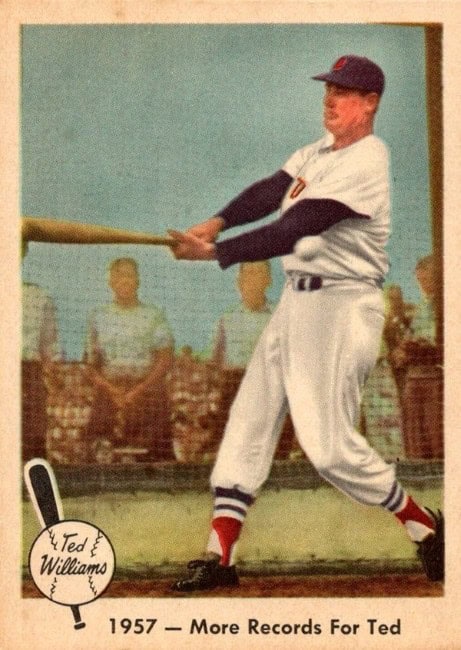
In the 1950s, Topps held a firm grip on the baseball card market, but Fleer made several attempts to break through.
In 1959, the company produced a set centered entirely on Ted Williams, who had signed an exclusive contract with Fleer. This strategic move allowed Fleer to bypass Topps’ control over active player rights. Throughout the 1960s, Fleer continued to explore alternatives by releasing oddball sets and the “Baseball Greats” series, which featured retired players rather than current stars.
While these efforts slowly chipped away at Topps’ dominance, it was Fleer’s legal challenge in the 1970s that truly changed the landscape. The company argued that Topps’ exclusive player contracts created an unfair monopoly. In a landmark decision in 1980, the courts ruled in Fleer’s favor, paving the way for both Fleer and Donruss to begin producing cards of current players in 1981. This ruling effectively broke open the modern card industry and marked Fleer’s transformation from a nostalgic gum company into a full-fledged sports card manufacturer.
Visual Identity and Design Styles
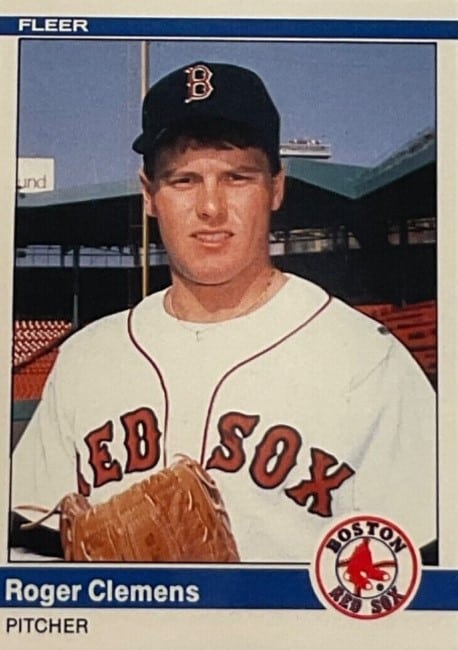
Fleer was never the flashiest brand, but it cultivated a reputation for clean, modern design with a few standout features. The company’s early 1980s releases emphasized simplicity. The 1981 Fleer set was notably plain, but each subsequent year brought gradual improvements in layout and photography. By 1984, Fleer had developed a more polished look, featuring sharp borders and a stronger focus on player imagery.
Another visual hallmark was Fleer’s use of full-color backgrounds. Unlike Topps, which often relied on gradients or airbrushed effects, Fleer embraced realistic, full-color photography. This approach gave their cards a grounded, documentary feel that resonated with collectors seeking authenticity. Fleer also made frequent use of script-style fonts for player names and included prominent team logos on the front of their cards. These elements helped collectors quickly identify team affiliations and gave the cards a cohesive, branded appearance.
Introduction of Ultra & Flair
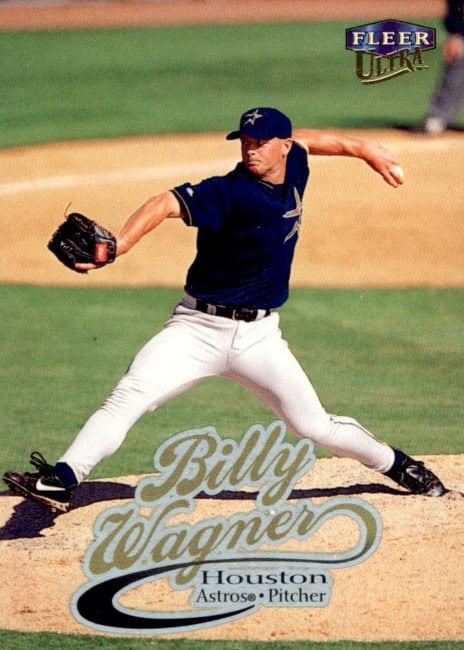
In 1991, Fleer introduced the Ultra line, a premium series that elevated the brand’s design standards. These cards featured high-gloss finishes, foil stamping, and enhanced photography, positioning Fleer Ultra as a direct competitor to Upper Deck and other high-end products of the era.
Flair, introduced in 1993, was another foray into the premium baseball card market. Unlike the more traditional layouts seen in Fleer’s base sets, Flair emphasized a high-end, almost luxury feel, appealing to collectors who wanted something more refined.
Flair also leaned heavily into innovation with inserts and chase cards. Sets often included etched foil parallels, die-cuts, and limited-run inserts that stood out both visually and tactilely. This commitment to premium materials and sophisticated design helped establish Flair as more than just a gimmick – it became one of the more respected high-end lines of the 1990s. While it never reached the mass popularity of Fleer Ultra, Flair carved out a loyal following among collectors who appreciated its unique aesthetic and production quality.
Acquisition of SkyBox
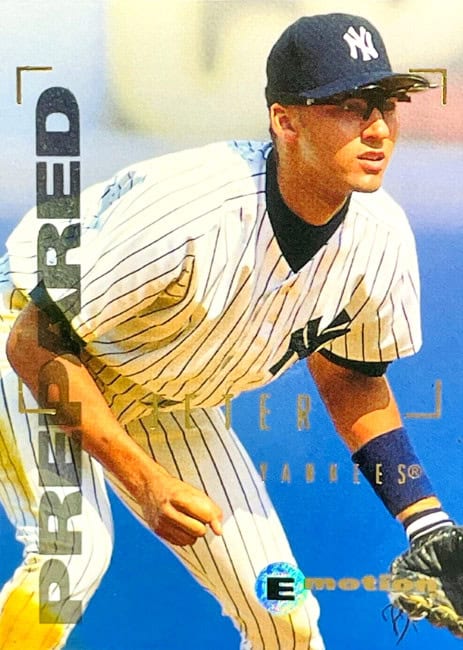
Fleer did not originally create SkyBox, but the two became connected when Fleer acquired SkyBox International in 1995. SkyBox was known for its innovative approach to sports cards, often pushing the boundaries with creative designs, unique inserts, and licensed products across multiple sports. The brand quickly gained a reputation for high-quality, eye-catching releases that appealed to collectors looking for something different from traditional card sets.
After the acquisition, Fleer continued to produce SkyBox-branded cards, using the label for premium and specialty releases in baseball, basketball, and football. This integration allowed Fleer to expand its product lineup and compete more effectively in the growing market for high-end and insert-heavy card sets. Under Fleer’s ownership, SkyBox remained a popular sub-brand throughout the late 1990s, contributing to Fleer’s efforts to innovate and maintain relevance during a competitive era in the hobby.
Notable Fleer Sets and Releases
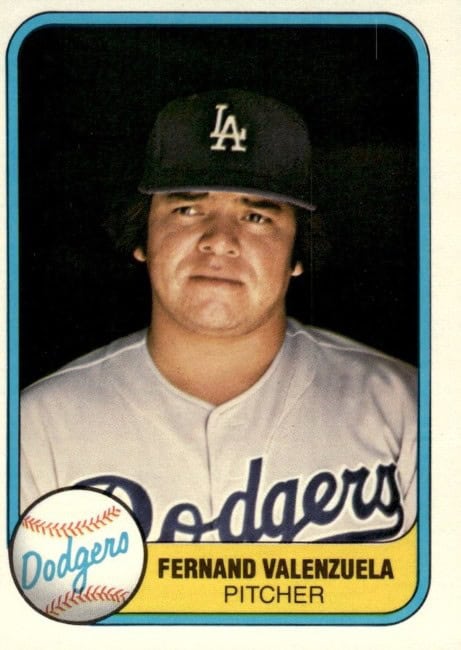
Several Fleer sets have become staples of the collecting hobby, either for their cultural significance or impact on the market. The 1981 Fleer Baseball set is perhaps the most important historically, marking Fleer’s re-entry into the baseball card market after its successful antitrust lawsuit against Topps. Though the set was rushed and riddled with errors, it remains a key artifact from a pivotal moment in hobby history.
Another standout is the 1984 Fleer Update Set, a limited-distribution boxed release that includes the first major league cards of stars like Kirby Puckett and Roger Clemens. Its scarcity and rookie content have made it one of the most valuable and respected sets of the 1980s.
A strong contender for Fleer’s fourth most influential set is the 1992 Fleer Ultra release. This set marked a significant shift in Fleer’s approach, embracing the premium card trend that was reshaping the hobby in the early 1990s. With high-gloss finishes, sharp photography, and foil-stamped elements, Ultra offered a sleek, modern look that appealed to collectors seeking a more upscale experience. It also introduced popular insert sets like “Ultra Performers,” helping Fleer establish a foothold in the growing chase card market. The success of Ultra signaled that Fleer could compete in the high-end space, setting the stage for future lines like Flair and SkyBox E-X.
The 1989 Bill Ripken Card Controversy
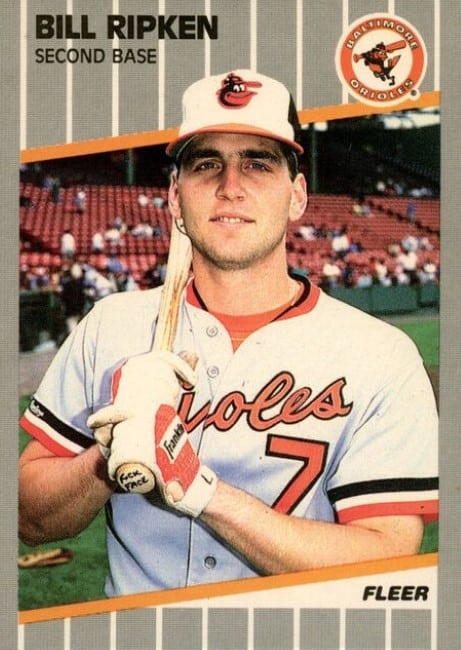
No discussion of Fleer is complete without mentioning the infamous 1989 Bill Ripken card, which has become one of the most talked-about error cards in hobby history. The Baltimore Orioles infielder appears on the card holding a bat with the phrase “F*** Face” crudely scrawled in marker on the knob. This profanity was never intended to be part of the final design, but it slipped past Fleer’s quality control and made it into the initial print run. As these cards reached stores and collectors, the obscenity quickly caught the public’s attention, sparking a media firestorm. Collectors scrambled to find the card, which instantly became a sought-after oddity, blending controversy and humor. The card’s unexpected appearance not only embarrassed Fleer but also turned the Ripken error into a cult classic, forever cementing its place in baseball card lore.
Fleer responded with multiple corrected versions:
- A black box over the bat knob
- A white scribble
- A revised image with a blotch
- A version with the phrase removed entirely
While some argue that the card was emblematic of the over-production and loose quality control rampant in the junk wax era, many wise collectors counter that Fleer successfully leveraged it into a marketing opportunity, turning controversy into collector demand.
Fleer’s Role in the Card Boom and Decline
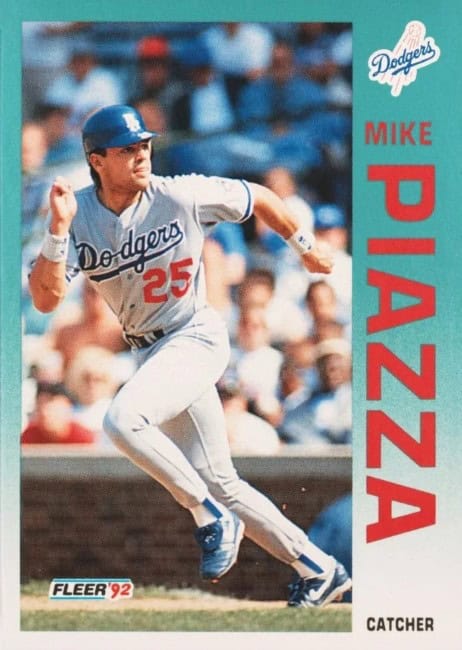
Fleer thrived during the late 1980s and early 1990s, benefiting from the broader baseball card boom. The rise of the Ultra brand attracted premium collectors, while Fleer’s base sets remained widely distributed and accessible, appealing to a broad range of hobbyists. During this period, the company was well-positioned as both a reliable mid-tier brand and a player in the emerging premium market.
However, the same market trends that fueled Fleer’s growth eventually contributed to its decline. Like many companies during the boom, Fleer fell victim to overproduction, flooding the market with cards that ultimately lost long-term value and diminished collector enthusiasm. The arrival of new competitors such as Score and Upper Deck raised the bar for design, print quality, and innovation, cutting into Fleer’s market share. Although Fleer made efforts to innovate – particularly with lines like Fleer Ultra and Flair – it often lagged behind leaders like Upper Deck in both branding and technology. As the market contracted in the early 2000s, financial instability set in. Despite launching solid products such as Fleer Tradition and continuing the SkyBox brand, the company struggled to maintain profitability in an increasingly competitive and saturated industry.
By 2005, Fleer ceased operations. Upper Deck acquired the brand’s assets, including its naming rights and design catalog, bringing an end to one of the most recognizable names in baseball card history.
Fleer Today
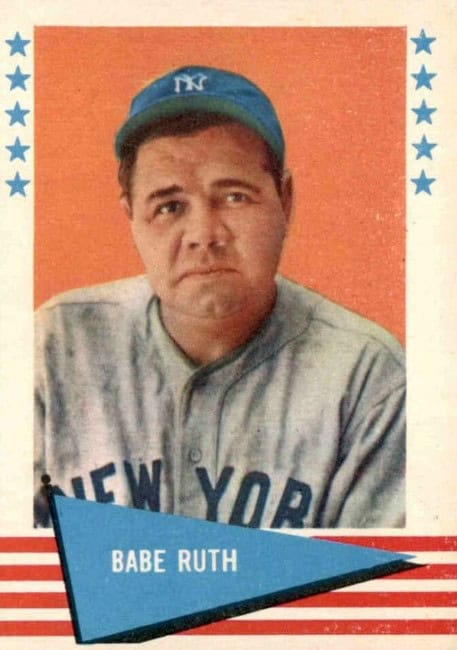
Although Fleer no longer exists as an independent company, the brand still lives on in select Upper Deck products. Occasionally, Upper Deck uses the Fleer name for retro-inspired basketball releases or as inserts in their premium lines.
In baseball, however, Fleer remains dormant. Because Upper Deck lost its MLB license in 2010, they cannot issue Fleer-branded baseball cards featuring team logos or active players. As a result, Fleer’s legacy in baseball exists primarily through vintage collections and secondary markets.
Still, many collectors hold Fleer in high regard for its role in shaping the modern card industry. From the historic 1981 set to Ultra’s peak years, the brand remains a touchstone of a golden era.
Conclusion
Fleer baseball cards may no longer be active in today’s market, but their imprint on the hobby is undeniable. From pioneering legal victories to unforgettable error cards, Fleer helped shape the collector landscape. Their cards captured the color, chaos, and charm of baseball across multiple decades.
For collectors and historians, Fleer remains more than just a name. It’s a symbol of innovation and unpredictability – a brand that dared to challenge the status quo and left behind a complex, colorful legacy.
